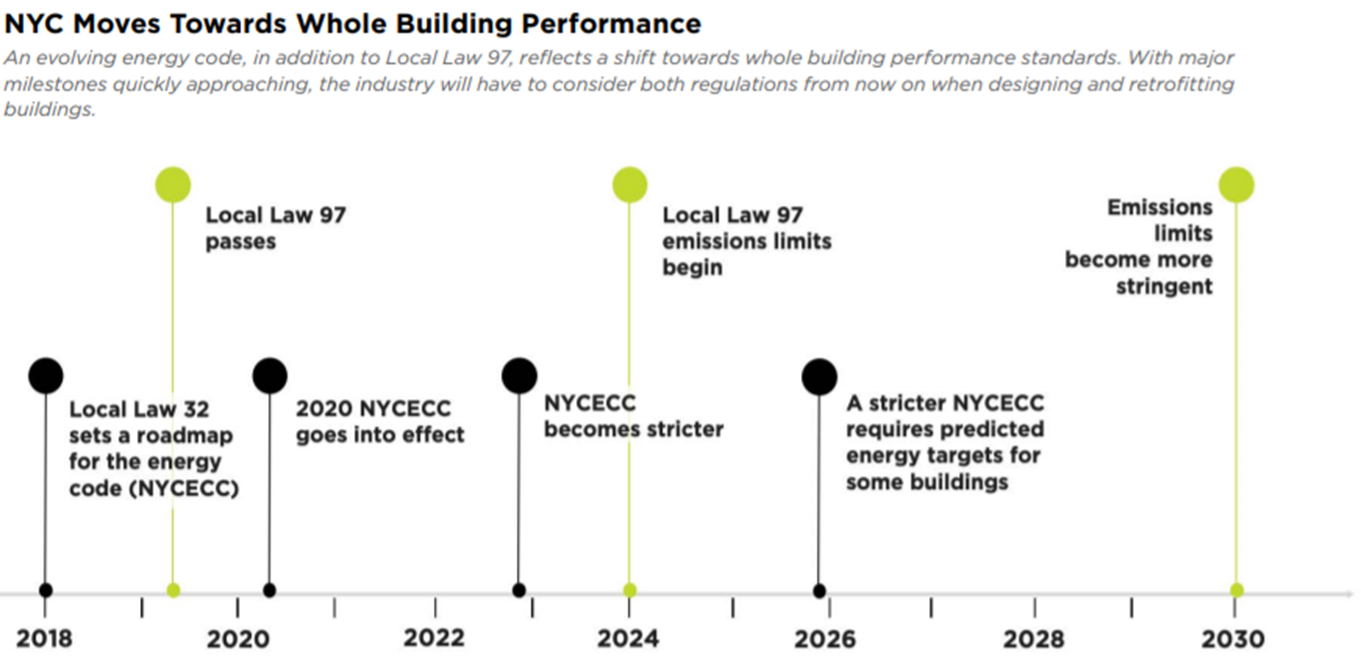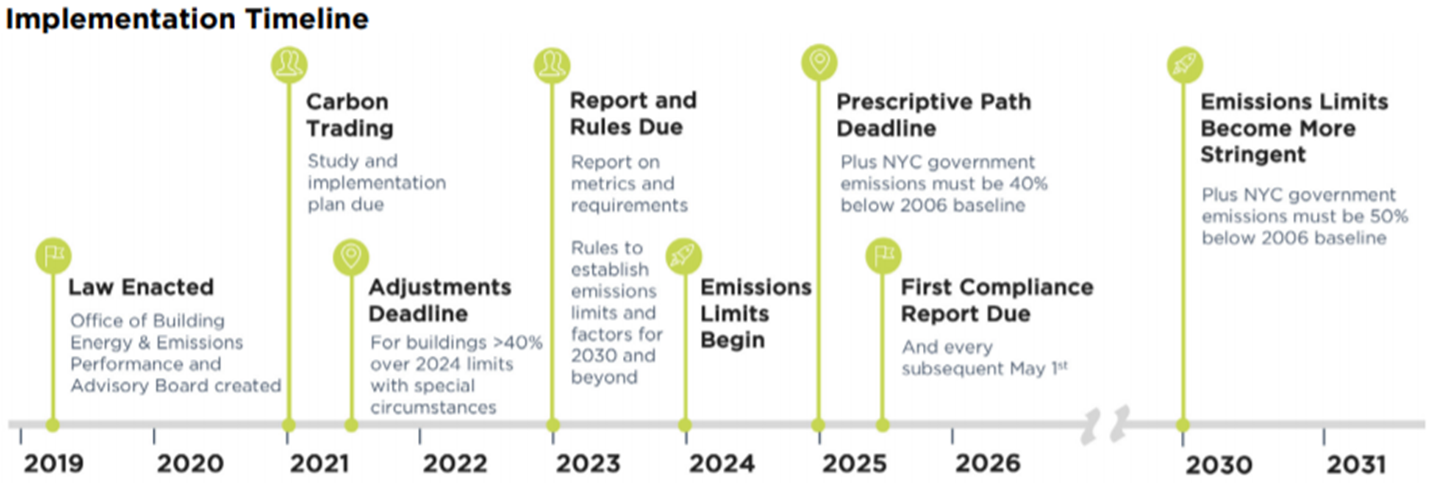One-Stop-Shop Turnkey Upgrades & Retrofits
Our Competitive Advantage
DEBT
- Streamline process with lenders
- In-dept knowledge with differences of financing options
- Proven systems and relationships in-place
REBATES
- Relationships with all related agencies
- Licensing in-place for applications
- Understanding of bottlenecks and critical path
PROJECT DEVELOPMENT
- Expertise on products available
- In-depth understanding of course and nuances for building types and mastery of local laws
- Strong focus on project returns in decision making and proven project execution
Our Role With Property Owners
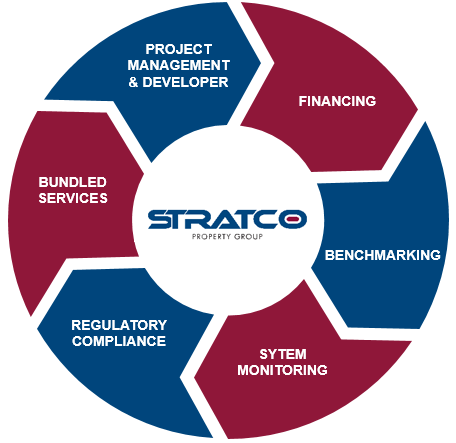
The Process
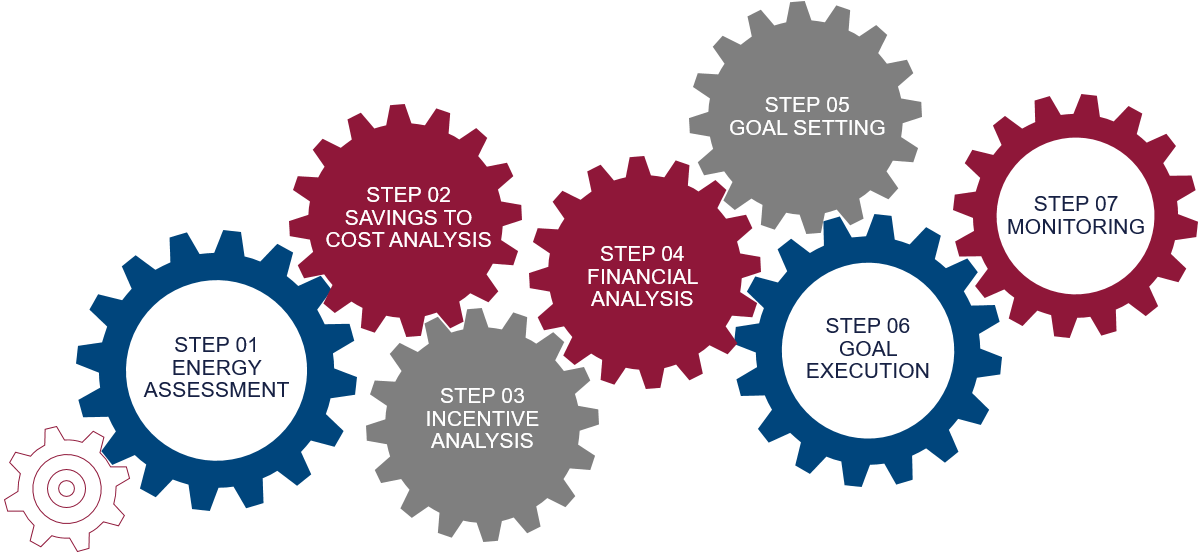
Our Role In The Value Chain
Building owners will only deal with STRATCO.
STRATCO manages the entire chain of events from assessment, analysis, underwriting, permitting, all related vendors, funding, project execution, and monitoring.
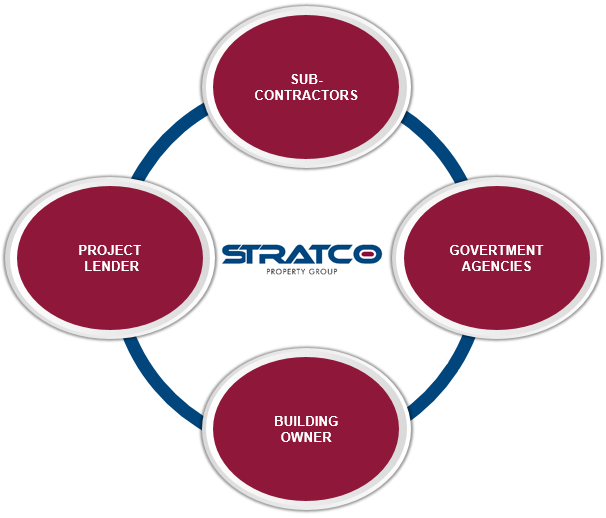
Strategic Energy Management Outcomes
Multifamily Performance Program (MPP) and Affordable Multifamily Energy Efficiency Program (AMEEP)
STRATCO is an approved NYSERDA Multifamily Building Solutions Network (MFBSN) Provider. STRATCO can guide existing affordable housing building owners and managers through the NYSERDA Multifamily Performance (MPP) program and NYS Affordable Multifamily Energy Efficiency (AMEEP) Program. These programs provide incentives to building owners for meeting energy efficiency goals.
STRATCO will work with you to develop a list of recommended upgrades that is customized to your properties to reduce your property site energy savings. The programs feature a tiered-incentive structure, starting at $700/unit and increases up to $3,500/unit for and MPP and $1,500/unit to $2,000/unit for AMEEP. Consider these programs early in the process of making improvements to your building to make the most of incorporating energy savings into your project.
Benefits to program participation include:
- Increased long-term asset value and net operating income
- Lower total cost of capital improvements; shorter ROI and opportunity for underwriting during refinancing
- Data-driven insight into your properties’ operational performance and tools to unlock operational efficiencies
MPP may be good for your property if you are:
- Planning capital improvements, like heating system upgrades
- Undergoing a renovation or retrofit
- Refinancing your property
- Seeking a low-income housing tax credit (LIHTC) or repair grant
- Participating in an energy audit through Local Law 87
- Participating in a utility program, weatherization assistance program (WAP), or other NYSERDA program—improvements through these programs count toward your 15% energy savings target
Local Law Compliance Services
Greener, Greater Buildings Plan (GGBP)
New York City needs to do more than improving new construction and renovations. The city's square footage is highly concentrated in less than two percent of its properties; two percent translates into 15,000 properties over 50,000 square feet, which accounts for almost half of New York City's square footage and as much as 48 percent of New York City's total energy use. In 2009, NYC enacted a comprehensive effort, called the Greener, Greater Buildings Plan (GGBP), which targets energy efficiency in these large existing buildings. GGBP consists of three regulatory pieces:
1. Local Law 84 - Benchmarking
LL84 requires owners of large residential and commercial buildings in the five boroughs to submit annual energy and water consumption reports to the City. LL84 impacts you if you own a building that is larger than 25,000 gross square feet or if you have two or more buildings in a single lot that are larger than 100,000 gross square feet. To check if your building falls under this requirement, visit the LL84 Covered Building List. LL84 requires reports to be submitted by May 1st of each year. If you miss the May 1 deadline, the next quarterly deadlines for compliance are August 1, November 1, and February 1. Failure to comply with the deadlines will result in a $500 fine per missed deadline, with a maximum of $2,000 in fines.
How to Comply
In order to comply with Local Law 84, building owners must report energy and water usage to EPA’s Portfolio Manager platform, a reporting tool that allows building owners to compare their building’s energy efficiency with similar buildings. A unique report must be submitted for each building covered by the law.
2. Local Law 87 - Energy Audit & Retro-commissioning
LL87 mandates that buildings over 50,000 gross square feet undergo a periodic energy audit and retro-commissioning measures once every 10 years. The intent of this law is to inform building owners of their energy consumption through energy audits, which are surveys and analyses of energy use, and retro-commissioning, the process of ensuring correct equipment installation and performance.
Buildings that are required to undergo audits and retro-commissioning include the same private sector buildings that must benchmark under Local Law 84 (LL84): buildings larger than 50,000 square feet, and two or more buildings on a single lot that are larger than 100,000 square feet.
In addition to benchmarking annual energy and water consumption, energy audits and retro-commissioning will give building owners a much more robust understanding of their buildings’ performance, eventually shifting the market towards increasingly efficient, high-performing buildings.
In summary, LL87’s energy audit and retro-commissioning process require the following:
- Determine if a building needs to comply, and what year it is due
- Conduct an energy audit and retro-commissioning of base building systems and complete an Energy Efficiency Report (EER) electronically
- Submit the EER once every ten years to the City by December 31
How to Comply
In order to achieve LL87 compliance, owners of covered buildings as designated by the Covered Buildings List must submit their Energy Efficiency Reports (EER) to the City by December 31 of the year they are due, once every ten years.
| Year first EER is due | 2020 | 2021 | 2022 | 2023 | 2024 | 2025 | 2026 | 2027 | 2028 |
| Last digit of tax block number | 0 | 1 | 2 | 3 | 4 | 5 | 6 | 7 | 8 |
Please note that all covered buildings with “0” as the last digit of their tax block number must comply with LL87 by December 31, 2020.
NOTE: Gross square footage (GSF) listed by the New York City Department of Finance (DOF) are estimates solely for identifying covered buildings under LL84 and LL87; when inputting information, building owners must calculate true gross square area.
STRATCO offers a turnkey compliance service for LL84 and LL87 for multifamily and commercial buildings. We will submit the necessary documentation to the City of New York and provide you guidance on the best practices after filing each report.
Engage our office to give you a low cost and in-depth service on providing accurate, transparent, and detailed consumption data to the city as outlined in the law.
Obtain your Energy Star score and letter grade with us and learn how to implement the best clean energy and/or energy efficiency technologies.
Ahead Of The Curve Compliance Services
Climate Mobilization Act (CMA)
1. Local Law 97 - Carbon Dioxide (CO2) Footprint Reduction/ Greenhouse Gas (GHG) Reduction
In 2019, NYC enacted landmark legislation to fight climate change and to reduce greenhouse gas emissions by improving energy-efficiency for certain buildings in New York City. Starting May 1, 2025, covered buildings required to submit a report showing carbon emissions by intensity kgCO2/ft2:
- Buildings over 25,000 square feet
LL97 sets increasingly stringent limits on carbon emissions per square foot in 2024 and 2030. The goal is "80x50":
- 40% emissions reduction by 2030
- 80% emissions reduction by 2050

Penalties:
- Exceeding Emissions Limits: Calculated by multiplying the building’s emissions overages by $268
- Failure to file report: Calculated by multiplying the building’s gross floor area by $0.50, for each month that the violation is not corrected within the 12 months following the reporting deadline
- False statement (misdemeanor): $500,000
How to Comply
- Start thinking about a carbon reduction plan to include energy efficiency and renewable energy goals
- Flexibility to comply through renewable energy credits and/or emissions offsets
- The law allows some affordable housing to choose low-cost energy-saving prescriptive measures instead of emissions limits
- Hire STRATCO to let you know where your property stands and develop a streamlined roadmap to compliance for the 2024 and 2030 deadlines
2. Other Relevant Laws of the CMA
Local Laws 92 & 94 – Green Roofs & Solar PV:
- Requiring green roof and/or solar PV systems or a combination of both on certain new construction and renovation projects. We can turnkey install your renewable energy (solar PV) and green roof/blue roof or provide you multiple bids and turnkey technical assistance for the installation. We can also renovate your roof with the latest code requirements.
Local Law 95 – Building Labeling:
- Adjusting metrics used for letter grades assessing building energy performance.
Local Law 96 – PACE:
- Establishing clean energy financing tools for building owners when approved in NYC. STRATCO has established relationships with clean energy, energy efficiency, and PACE lenders. For projects that are ineligible for PACE financing, we can provide financing assistance in-house and with another asset-based lender, primarily focused on financing energy retrofits, sustainable energy projects, and equipment for multi-family housing and businesses.
2020 New York City Energy Conservation Code (NYCECC)
1. What is the energy code?
The energy code regulates building systems that most impact energy use: the envelope, heating and cooling, hot water, lighting, and power. The code specifies requirements for each system to ensure a baseline of efficiency is built-in, but complying with its numerous prescriptive requirements can be complex and restrictive. Because of this, future energy codes will focus less on checklists of requirements and instead on the buildings’ total energy performance. NYC’s energy code is 44% more stringent than a decade ago.
New York City’s Local Law 32 of 2018 sets a course for the energy code that will make it both stricter and simpler. The law requires NYStretch-level stringency for two code cycles and a shift to a predicted energy use target in the third. By 2025, buildings larger than 25,000 square feet will need to comply in a new way: instead of a checklist of prescriptive requirements, the code will specify the maximum amount of energy a building is expected to use. This framework begins to streamline the code and offers greater flexibility for designers but will require energy modeling to demonstrate compliance and a holistic understanding of building systems to get there.
2. What's new in the 2020 Energy Code?
The 2020 NYCECC has many important changes that will drive energy savings. Notable new provisions to the commercial and residential codes are summarized on this link.
NYS Clean Heating & Cooling - Mini-splits & VRF Incentives Program
STRATCO Property Solutions will boost your business's ability to obtain statewide and third-party utility companies rebates/incentives to become a low-carbon user by implementing the adoption of electric air-source heat pump systems/technologies for heating your property. STRATCO will apply for available rebates on your behalf and be the GC for your ASHP (mini-splits) and VRF projects upon request.
Below are estimated incentives/rebates for this program:
- Mini-splits totaling < 300,000 Btu/h - anywhere between 10% to 20% per 10,000 Btu
- Custom (VRF, > 300,000 Btu/h) - requires a preauthorization and a preliminary assessment of technical feasibility. Rebate can cover up to 40% of job cost
To learn about other options to optimize your dollar spend on retrofits or new energy efficiency measures, and if you are interested in submitting an incentive application, please email Robert at robert@stratcoproperty.com.
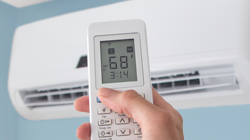
Air Source Heat Pumps (ASHP)
Air source heat pumps also known as mini-splits extract heat from the air outside and distribute it inside your home or business. During warmer months, the process is reversed to provide cooling by pulling heat out of your interior space. Why should you consider installing mini-splits?
- If you want to replace oil, propane, or electric resistance for heating and cooling to a cheaper and cleaner heating & cooling technology
- If you or your tenants are experiencing issues with heating and/or cooling the space efficiently and would like more comfort
- If your heating and cooling system are approaching end of life
- If you are making a minor renovation or addition to your home or business such as insulation and air-tightening
Variable Refrigerant Flow (VRF)
Like ductless mini-splits, VRFs use refrigerant as the cooling and heating medium. This refrigerant is conditioned by a single or multiple condensing units (which may be outdoors or indoors, water or air cooled), and is circulated within the building to multiple indoor units. VRF systems, unlike conventional chiller-based systems, allow for varying degrees of cooling in only certain areas, reducing energy consumption. VRF technology is generally installed at larger size buildings.

